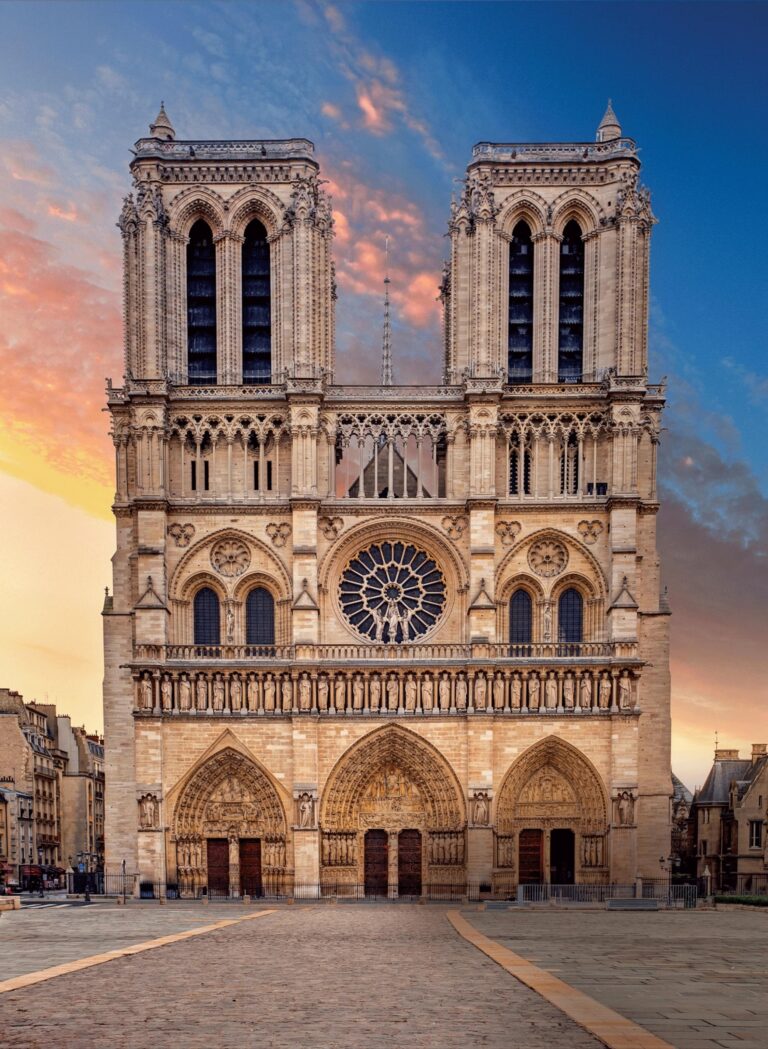Microsoft has announced a collaboration with French authorities to create a detailed digital replica of Paris’ iconic Notre-Dame Cathedral. The initiative aims to preserve and showcase the historic monument through cutting-edge technology, enabling virtual access to the landmark for audiences worldwide. This project follows the devastating 2019 fire that severely damaged the cathedral, highlighting efforts to combine heritage conservation with digital innovation. Reuters reports that Microsoft’s involvement will play a key role in bringing France’s cultural treasure into the digital age.
Microsoft Partners with France to Create Digital Replica of Notre-Dame Cathedral
In an ambitious collaboration, Microsoft is leveraging its cutting-edge technology to create a highly detailed digital replica of the iconic Notre-Dame Cathedral in Paris. This initiative aims to preserve the cultural heritage of the cathedral digitally, offering virtual access to global audiences while supporting restoration efforts. Utilizing advanced AI, cloud computing, and 3D mapping techniques, the project allows historians, architects, and the public to explore Notre-Dame’s intricate architecture like never before.
The partnership highlights key objectives including:
- Enhanced digital preservation using high-resolution imaging and 3D reconstruction.
- Virtual reality tours making the historic site accessible worldwide, especially after the 2019 fire.
- Collaborative restoration support by enabling experts to remotely analyze and plan repair work.
| Technology Used | Purpose | Benefit |
|---|---|---|
| Azure AI | Data processing and visualization | Accurate 3D models |
| HoloLens | Interactive virtual exploration | Immersive user experience |
| Cloud Storage | Secure data archiving | Long-term preservation |
Innovative Technology Enables Detailed Preservation and Virtual Tourism Opportunities
Leveraging cutting-edge 3D scanning and artificial intelligence, Microsoft is partnering with French preservationists to create a highly detailed digital facsimile of the Notre-Dame Cathedral. This advanced technology captures intricate architectural elements and textures, allowing experts to analyze and document areas that sustained damage during the 2019 fire. By utilizing cloud computing and AI-driven reconstruction tools, the project will ensure that the cathedral’s legacy is preserved with unprecedented accuracy, supporting restoration efforts and future historical research.
The digital replica also opens the door to immersive virtual tourism, making one of the world’s most iconic landmarks accessible to a global audience. Visitors will be able to explore the cathedral’s interior and exterior through detailed virtual reality experiences, including:
- Interactive guided tours highlighting architectural features and historical narratives
- 360-degree panoramic views offering perspectives from vantage points typically off-limits to the public
- Augmented reality enhancements allowing users to visualize past restorations and original design elements
| Feature | Description | Benefit |
|---|---|---|
| 3D Laser Scanning | High-resolution capture of structural details | Accurate digital archive and restoration reference |
| AI Reconstruction | Automated repair of damaged sections | Enhanced preservation precision and efficiency |
| Virtual Reality Access | Immersive visitor experiences | Global accessibility and educational outreach |
Experts Recommend Expanding Digital Archiving Initiatives for Cultural Heritage Sites
Industry specialists emphasize the urgency and importance of investing in digital archiving to preserve cultural landmarks, especially in light of recent technological breakthroughs. The collaborative project involving Microsoft and French authorities to develop a detailed digital replica of the Notre-Dame Cathedral serves as a shining example of how innovative digital tools can immortalize heritage sites for future generations. Experts highlight that such initiatives not only enhance public accessibility but also create invaluable resources for researchers and educators worldwide.
Expanding digital archiving efforts can provide a robust framework for protecting fragile structures vulnerable to natural disasters, environmental degradation, or human interference. Key benefits include:
- Virtual preservation: Detailed 3D models capturing architectural and artistic details.
- Educational outreach: Interactive platforms enabling global audiences to explore historic sites without physical travel.
- Disaster recovery: Digital blueprints to assist restoration in case of damage or loss.
| Digital Archiving Advantages | Impact on Cultural Heritage |
|---|---|
| High-resolution 3D Imaging | Preserves intricate craftsmanship details |
| Cloud-based Storage Solutions | Ensures longevity and wide accessibility |
| Augmented Reality Experiences | Engages younger audiences effectively |
In Retrospect
As Microsoft steps in to create a digital replica of Paris’ iconic Notre-Dame Cathedral, the collaboration underscores the growing role of technology in preserving and sharing cultural heritage. This initiative not only offers a new perspective on one of the world’s most historic landmarks but also sets a precedent for how digital innovation can support restoration and global accessibility in the years to come.




